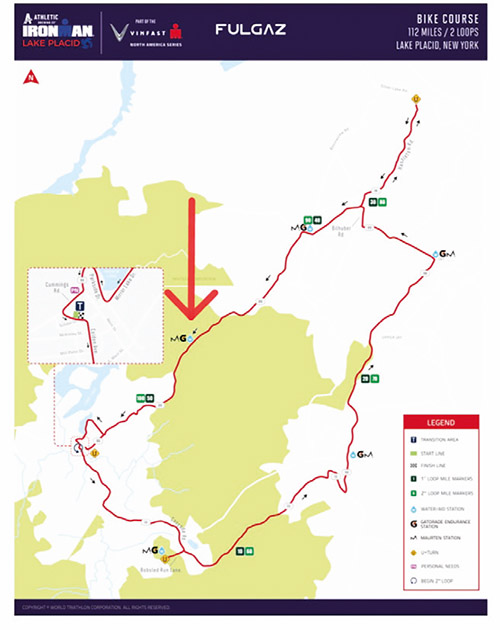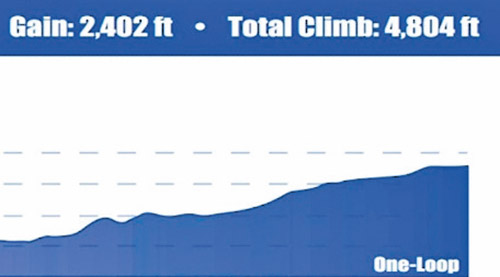
By David Roher
12:27 p.m. (5.75 hours since race start)
I was rolling down Keen at 47 mph. This speed required all of my mental and physical energy. For the next five minutes, 300 seconds, every decision had to be perfect. There was zero room for errors. There were slower riders in front of me who were in the passing lane 200 meters ahead. I didn’t want to slow down and I didn’t want to move over to the oncoming traffic lane to get around them. I started calculating the speed of two objects of differing speeds and I didn’t like my own answers. Add to that the fact that the road is not straight. It curses, so you have to lean into the curve hoping that your tires keep gripping the asphalt. I had to time my pass perfectly or someone was going to get very hurt at these speeds. Buzz Aldrin is remembered as the second man to walk on the moon, but in NASA circles he was first known as “Dr. Rendezvous” for doing his Ph.D. on orbital mechanics.

(Mechanics who fix your spacecraft?)
Orbital mechanics is the idea that to pass another object in space you don’t need to speed up, you need to get closer. The closer you get to a celestial body; the greater gravity’s pull will become. Put another way, a planet’s orbit squared is equal to the axis of the orbit cubed.
(Ok, how does P2 =a3 help you pass a cyclist?)
Get them to move, so I don’t have to.
I’m not saying that I was computing Kepler’s Third Law of Planetary Motion…
(Kepler only measured the speed of a moon rotating around a planet.)
…and planets don’t go flying off a mountain if they rotate too quickly, but I was aware that the less I had to move out of other people’s way at 47 mph, the longer I would stay at this…
(Constant?)
…speed.
(Did you honk at them?)
No, I yelled the traditional passing phrase, one word at a time, “On … your … left!”
(Did they hear you?)
Thankfully, yes.
12:43 p.m. (six hours since race start)
After coasting for five miles, I had to pedal again. I was aware that I was 20-30 minutes ahead of schedule.
(What schedule?)
I have always worked off a base schedule:
Swim start to bike start 90 minutes.
Bike start to run start eight hours.
Run start to finish line: five hours, 59 minutes.
All total: 14 hours, 59 minutes.
That was the goal, to go sub 15 hours.
I checked the box on the swim. I was ahead of schedule for the bike, so I could take a little extra time on the run.
(Can you run a sub-six-hour marathon after 112 miles of biking?
I did it in 2016.
(But you haven’t done so since then.)
That’s because I blew out my legs pedaling too hard on the bike and wound-up walking some of each of the subsequent marathon runs.
2:43 p.m. (eight hours since race start)
I was now 98 miles into the bike course. Which was great until my brain reminded me that it’s a 112-mile, not a 100-mile course. There were signs on the course every 10 miles, but I knew where I was because my bike computer told me. I was 14 miles or about one hour from the bike finish and I was all out of protein shakes. I was now running on blue raspberry Gatorade and adrenaline.
3:13 p.m. (8.5 hours since race start)
The bike course is a loop. There were six aid stations where riders could grab food and drink as they roll through, or they could also choose to stop. The final aid station was located in the last 15 miles of the 56-mile loop. Normally, riding up these little inclines wouldn’t have been so taxing, but 20 miles of them drained my energy. I felt my strength leaving me like snow melting in the hot sun.
Some riders stop to fill their bottles; others stop to use the Porta-John. I just rolled through with my hand out. I had been on the bike for seven hours and with no more calories left. I was glad to grab two banana slices as I rolled through the last aid station on the bike course. Normally, I would eat just one, but I needed the calories. A single slice of a banana is only 25 calories. This would be just enough to get me to the end of the course, I hoped. If my math was wrong, I was gonna be in trouble.
David Roher is a USAT certified triathlon and marathon coach. He is a multi-Ironman finisher and veteran special education teacher. He is on Instagram
@David Roher140.6.
He can be reached at [email protected].










